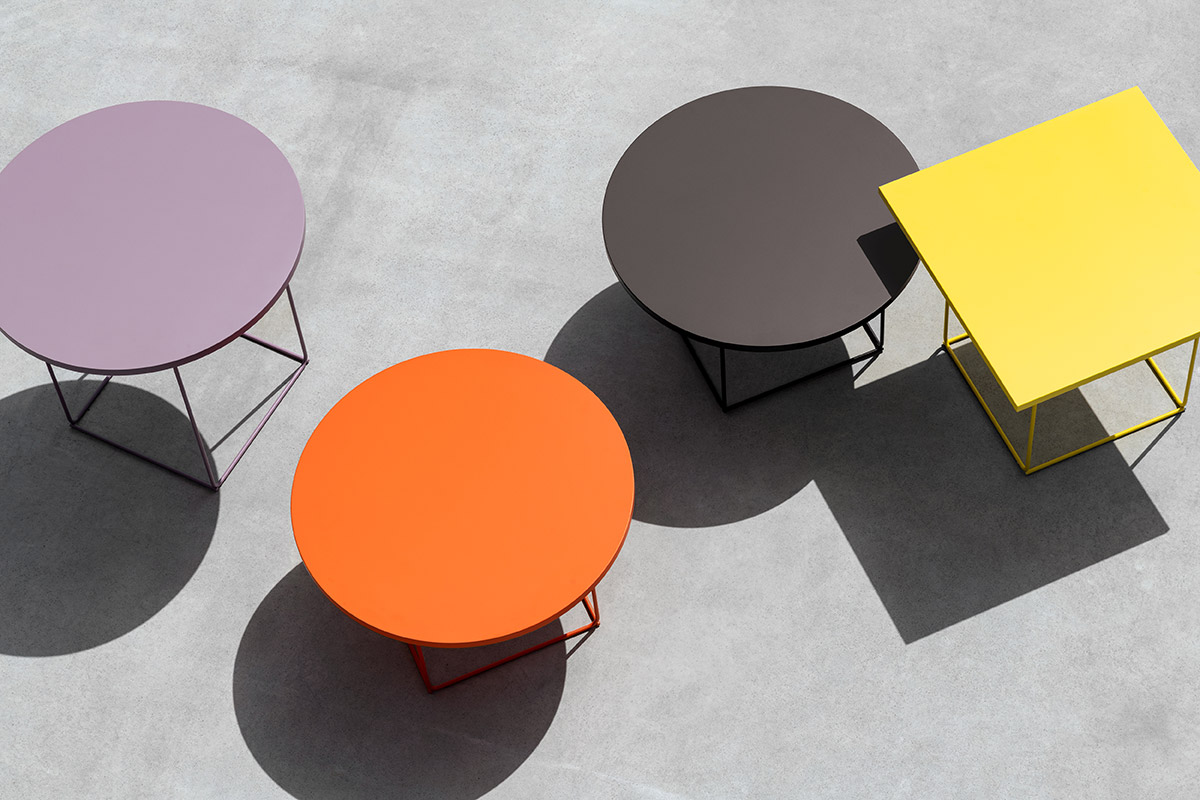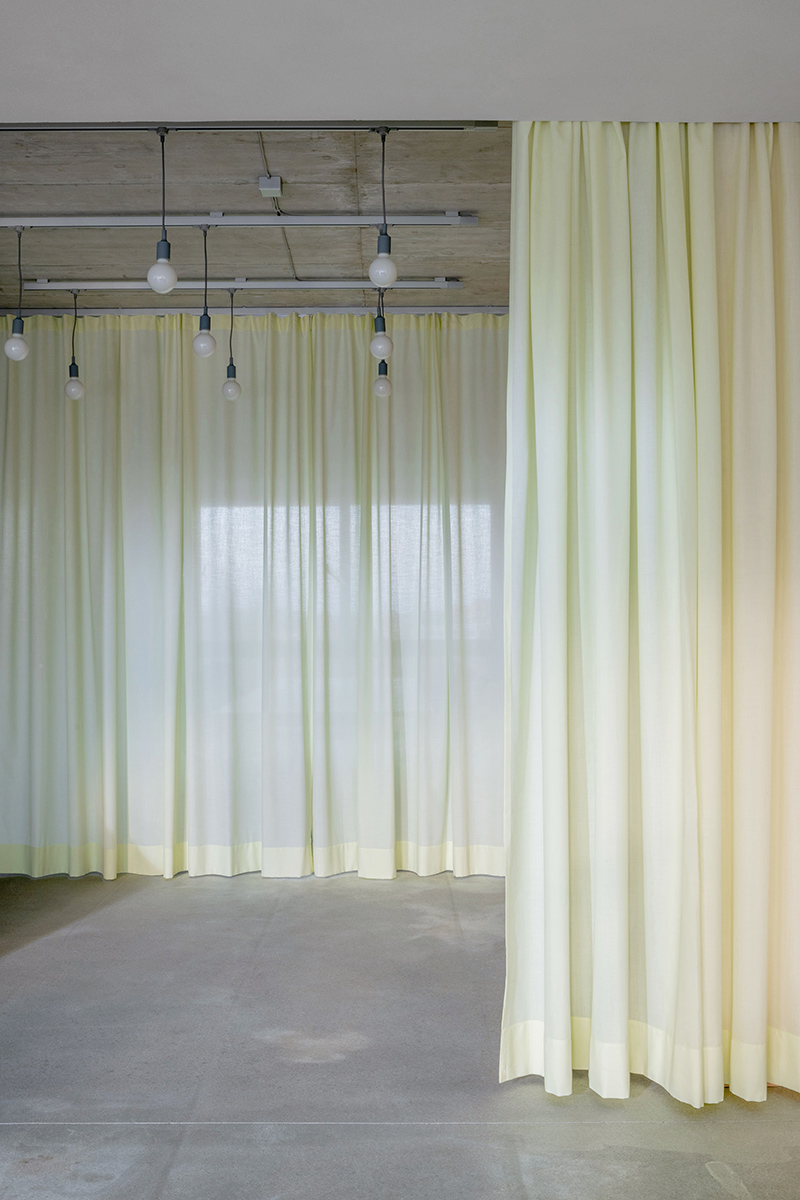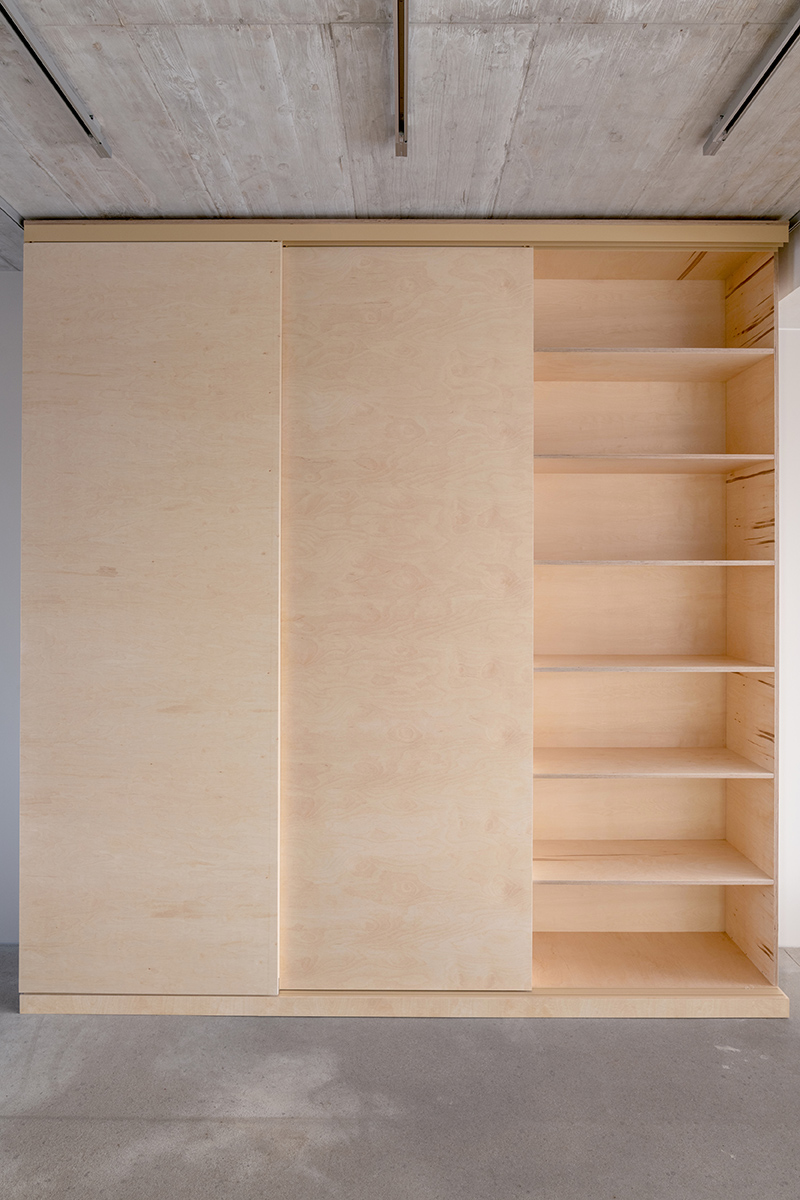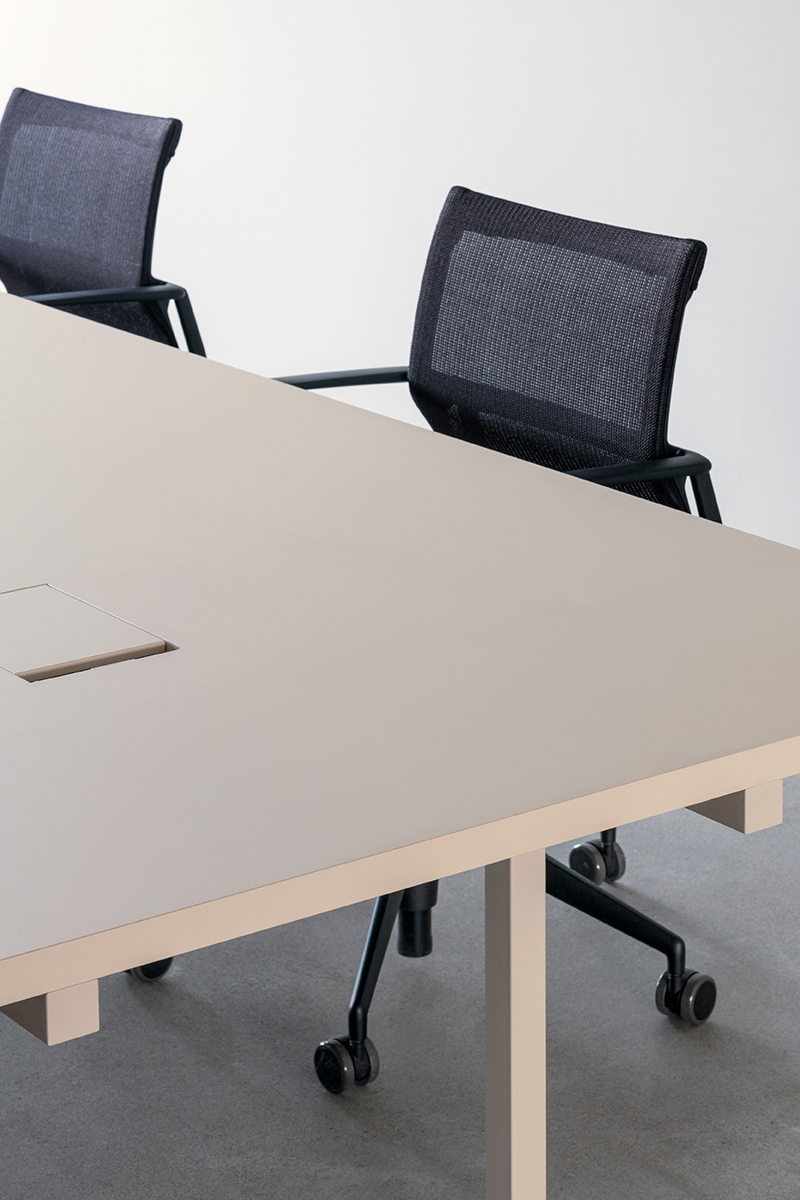20/043
LOEHR
Design Studio
Berlin

«We would love to see and experience more exchange, more interdisciplinarity between the arts – architecture and design, fine arts, sculpture, graphic design.»
«We would love to see and experience more exchange, more interdisciplinarity between the arts – architecture and design, fine arts, sculpture, graphic design.»
«We would love to see and experience more exchange, more interdisciplinarity between the arts – architecture and design, fine arts, sculpture, graphic design.»
«We would love to see and experience more exchange, more interdisciplinarity between the arts – architecture and design, fine arts, sculpture, graphic design.»
«We would love to see and experience more exchange, more interdisciplinarity between the arts – architecture and design, fine arts, sculpture, graphic design.»
Please, introduce yourself and your Studio…
David: We are LOEHR, a design brand from Berlin. We design, develop, manufacture and distribute furniture and objects. The core is our own product collection, which is formally influenced by architectural categories, constructive methods and the language of modernism. Naturally, we closely work directly with architects and project-oriented. Last year we expanded our offering into creative services as a design studio, offering spatial and interior design and provide a platform for collaboration. The company was founded in 2012 by us three brothers – that is Julian, Leon and me, David.
Julian: Although everyone is closely involved in everything happening as we are still a quite young company, each one of us has core responsibilities.
David and me are trained designers, but from slightly different backgrounds. David has a communication design education, and i have a product design background. Leon has originally studied psychology and is responsible for business and sales. While David also cares about our communication and PR, i am usually more deeply involved in the industrial design, engineering and modelmaking of our products.

Julian, Leon and David Löhr © S. Höderath
How did you find your way into the field of Design?
David: I have been interested in drawing as long as I can remember. Retrospectively I am quite mad that (my) education in high school did not include any design or architecture at all – just the classic fine arts. Gropius, Bauhaus, Rams, Stankowski, Otl Aicher – cultural cornerstones that are just not been taught about at all!
Out of this narrow view I applied for fine arts in Leipzig, Berlin and Wuppertal and did not succeed. To fill the gap, I did a 6-month graphic design internship at an agency in Hamburg that turned into my first job. After two years, I quit, applied and got accepted at the University of Arts in Berlin (UDK). Starting to study visual communication in 2002, I already started to develop an interest for spatial design and architecture, which added literally another dimension to the graphic design work I was doing back then.
Julian: I had an early interest in creative work as well and liked to work physically with material and form. Maybe the way was a little more paved by David, so I did not have to do that “fine arts excursion”!
Before I was studying furniture & interior design and did my Master thesis at Burg Giebichenstein in Halle, I had graduated with a Bachelor in industrial design in Magdeburg. It was a project during my bachelor studies that initially sparked my interest for furniture. Out of that occasion, there was a dialogue starting between me and David that laid the foundation for what LOEHR is now, and what brought me to the Burg as well.
What are your experiences founding LOEHR and leading your own design studio?
David: Even when we were drawing up our first ideas, the decision to be independent was there, though we did not fully realize at that time what it really meant. We were highly enthuasiastic, but totally inexperienced regarding the market or running a company.
The two things steering us clearly into this direction, were: First, it would be a much longer way to try and get our designs into production at a manufacturer. And second, we wanted control the product – the form, fabrication and communicating it.
Julian: With the decision to start a company and be a manufacturer, we involved our third brother Leon. The aspect of us being brothers brings stability and trust as well as it is a challenge in itself. On one hand, we can trust each other unconditionally and are able to speak openly. On the other hand there are siuations, where being brothers also means that we actively need to break with the old behavioural patterns between siblings as we are business partners, too.
David: We can already identify certain phases since our debut at the imm cologne in January 2012. The first years, we were a “garage business”, had no studio, just some storage options in Hamburg and Berlin. And we were located in different cities – Julian in Halle, Leon in Hamburg and me in Berlin. It enabled us to keep costs at a minimum, invest, learn and steadily gain experience.
Julian: In the Fall of 2015, we set up our first studio in Berlin-Moabit and all moved into the city. Being together regularly in a space changed our approach to design, sparked new discussions and also made us reflect on what we have been doing up until then. We started to think more deeply about us as a brand and where we want to go and how we want to appear publicly. But we also struggled in terms of business. There was a fatigue after the first years and sometimes we wondered, if we had missed some chances.
David: It was a relief to finally release the novelties in November 2017. We were very lucky to be able to host a press event at the Oscar-Niemeyer-Haus in Berlin, which normally is off-limits. That brought far more attention to LOEHR than before and also located us clearly in Berlin. So it was worth all the effort, but up until that it felt like a “this is the last shot we get” to us. Most people we meet today recognized LOEHR after that point in time. Looking back 2 ½ years, we see it almost like a rebirth, like our story starts actually there.
Julian: And last summer, we moved our studio to Schöneberg, which is the beginning of another, new chapter. Well – the first half of this year we imagined differently as everyone else did, too – but the new location already propelled us into a new phase. So we are quite excited, despite the global situation.
How would you characterize Berlin as location for practicing you craft? How is the context of this place influencing your work?
David: Berlin surely has an impact on our work. We feel that this city has reached a state of adolescence. Compared to 10 or 15 years ago, the architecture and design output is differing much to the retro/DIY-style much associated with Berlin in the first decade of the century.
We appreciate that growth very much. We like to see that the protagonists here are being taken more seriously. It is hard to grasp, but we feel there is a contemporary “Berlin Style” to design and architecture. To us, it is best characterized as improvisatory, industrial and rough, yet refined and with a certain avantgarde or artistic edge. This mixture is totally ambivalent in itself, but that is what makes it interesting and distinctive at the same time.
Julian: But that is just our subjective view, maybe an art or design historian can define this better in 20 years from now. What still makes it difficult to clearly allocate a nature of a “Berlin Style” is the multi-layer, multi-scene nature of Berlin. There are so many different micro cultures here that sometimes temporarily interact and sometimes never touch each other. The answer to that question is highly dependent on who you ask.
Things to see, taste and do in Berlin…
– See the Hansaviertel
– Taste the very good coffee at “Double Eye” in Berlin-Schöneberg
– Do come and visit us. It’s just a 10 minute walk from “Double Eye”.
What does your desk/working space look like?
The LOEHR office is part of the PIROL studios in Berlin-Schöneberg. We have a 170sqm unit that is basically divided into three parts – office / showspace / workshop & storage.
From Sketch to Object. How would you describe your working process?
Julian: When there is an idea, we usually put a preliminary sketch up on the table for discussion. An idea does not necessarily has to be a complete product, sometimes it is just a formal method, a material or a typology as a starting point. During the discussion, we evaluate the idea in context – architectural space, scale, arrangement and how would it fit functionally and strategically along the collection of existing products.
If the idea persists, we usually go straight away to 1:1 scale modelmaking. Most of the time we use cardboard, but sometimes we feel the need for a functional model from the very beginning and use robust material like wood or steel. In parallel, we set up a 3D model to visualize final material and colors. Then we iterate in both the physical and the 3D model as long as necessary. Taking the design as early as possible to our production network to flesh out all the details for serial production is important. Then again, a phase of iterations starts, where we must find ways to be as uncompromising and economical as possible. What I guess, is quite uncommon: Already when in the modelmaking phase, David starts with preliminary ideas for communication and photography – but it greatly helps to precisely evaluate the character of a product.
Name a…
Person/Julian: Carmen Herrera
Person/David: I have a hard time naming one person, but i am impressed by those, who excelled in multiple disciplines and fields. Truly interdisciplinary, but then radical and clear in their own artistic language and thoughts – like Enzo Mari, Ettore Sottass or Donald Judd to name a few.
Chair/David: Houdini, Stefan Diez for e15
Chair/Julian: Thonet No. 14
Building/David: The HEW-Building from 1969 by Arne Jacobsen in Hamburg. I have an early childhood memory with mixed feelings about it. It certainly made a lasting impression about what architecture is capable of.
Building/Julian: Bruder Klaus Feldkapelle by Peter Zumthor
How do you communicate your work?
David: The decision to be independent was also about communicating our design, our products. We think it is utmost important to care about the communication of a product as much as making it. Communication should not just be aligned with the brand and the idea of the product, but should elevate it. As an educated communication designer I am well aware that bad communication can easily water down all the effort that has been put into a product, and in the worse case, even kill it.
What has to change in the field of Architecture and Design? How do you imagine the future?
Julian: Besides continually expanding our collection, we would love to do more project-specific collaborations and expand our creative services.
David: It goes along with a thinking that we all share: We would love to see and experience more exchange, more interdisciplinarity between the arts – architecture and design, fine arts, sculpture, graphic design. Some universities foster that by giving all students a common basic education in the bauhaus-spirit. But that is lost with graduation. People then enter their daily work routines, career paths, get lost in dependencies and workload.
When imagining the future: We still have a long way to go, but we want to develop LOEHR also into a place where people want to work at because it stands for a certain mindset.
Julian: Being optimists, we are seeing signs of cultural change. And the web and social media is helping that, providing more transparency, more access, more exchange to give new ideas and thoughts a forum. KNTXTR is doing a highly significant part here. So thank you sincerely, Katharina, for all the effort and energy that you put into the endeavour – and we are very happy to contribute!
Project
NO OFFICE
For Berlin-based innovation company of Unicorns & Lions we developed a full interior concept in close cooperation with the client. Located in the LOBE Block by Brandlhuber + Emde, Burlon and Muck Petzet, the concept utilizes colourblocking and surface materiality to code the functional areas – a subtle and emotional subdivision of the otherwise open space. Currently two further units on the fourth floor are in development that include an open floor workshop space and a project laboratory.
Project
Sneak Peek
We like to provide a sneak peek on what we are currently working on.
PIROL
The Studios we are located in have wide communal spaces that are planned to be used for work, gatherings, exhibitions, talks. The place is in cooperative development, the tenants are bringing in expertise to plan several of the areas. We are responsible for the interior of a conference / workshop space. A special edition of our upcoming BASIL tables with castors are the centrepiece(s). They can be configured into various arrangements for different scenarios such as presentation, group work or supplementary surfaces.
Website: https://www.loehr.co
Instagram: @loehrfurniture
Photography: Portrait© Stefan Höderath / Studio Photos + Sneak Peek © LOEHR / Collection © Stefan Höderath, © Thomas Wiuf / NO OFFICE© Stefan Höderath, Drawings x CGI x WIP Photography LOEHR /
Interview: kntxtr, kb, 10/2020






























